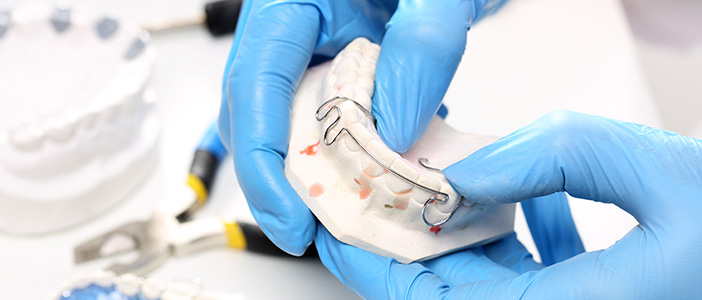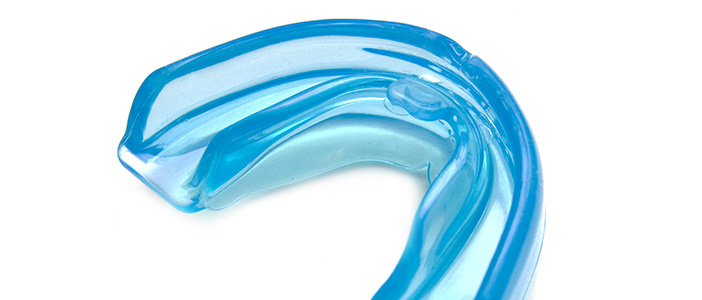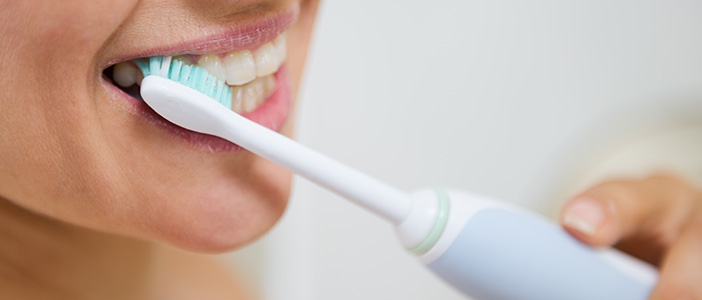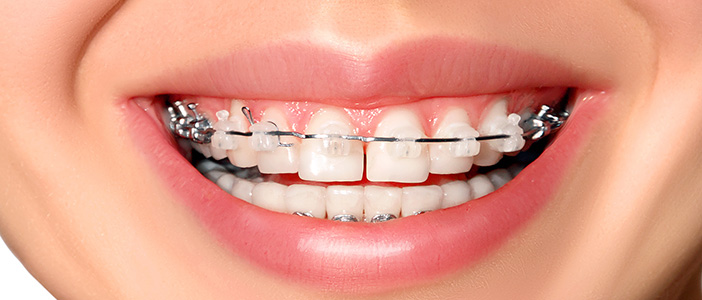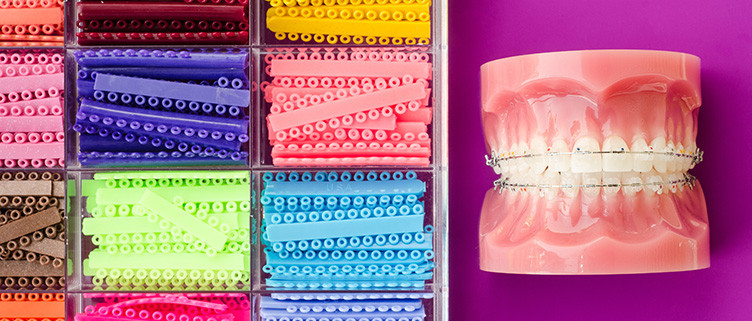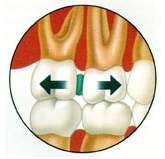All About Arch Wires in Orthodontics: Purpose, Types, Stages, and Recommended Uses
If you’re considering braces, you may have heard the term arch wire used. But you probably have no idea what that means!
In this article, explain what orthodontic arch wires are, the purpose they serve, and what types may be used in your braces. And if you’re interested in straightening your teeth without the use of wires, we can fill you in on that as well.
Table of Contents
- What Is an Arch Wire?
- What Is the Purpose of the Arch Wire?
- What Are the Different Types of Arch Wires
- Different Braces Wire Stages: How Arch Wires Can Change Throughout Treatment
- What’s the Best Orthodontic Arch Wire To Use?
- Is It Possible To Straighten My Teeth Without Using Wired Braces?
What Is an Arch Wire?
Orthodontic arch wires are a pair of thin, flexible wires that attach to braces and are used to generate the force that is required to move teeth into alignment over time. These wires are called “arch wires” because the wire on the top teeth comprises the top arch, and the wire on the bottom teeth comprises the bottom arch.
An arch wire is like an engine that guides and moves your teeth. Without an arch wire to connect your braces, they would simply be an aesthetic choice, and your teeth would never move! These brace wires come in different sizes and have different material compositions.
What Is the Purpose of the Arch Wire?
When you first start treatment with braces, your teeth are crooked. The wire that attaches to your braces must be able to return to its original shape when it is deformed or bent. The force that returns the wire to its original shape is what moves your teeth. The wire should be springy yet exert a gentle force so that your brackets do not pop off when the orthodontist ties in your arch wire.
As your teeth get straighter, your orthodontist will exchange the wire in your braces for stronger wires that are usually less elastic and stiffer. These stronger, stiffer wires allow the orthodontist to have more control over tooth movements. Oftentimes, these later wires have characteristics that allow the orthodontist to put permanent bends in the arch wire if he wants to move individual teeth.
What Are the Different Types of Arch Wires?
When orthodontists discuss the different types of arch wires, they are typically referring to either the size/shape of the wires or the materials they’re made with.
Arch wires come in round or rectangular shapes, and the types of brace wires may be composed of stainless steel, nickel-titanium, or beta-titanium.
Size and Shape of Arch Wires
When orthodontists talk about the “size” of an arch wire, they are referring to the cross-section or thickness of the wire. Considering arch wires made from identical materials, the smaller the cross-section, the more elastic and less stiff the wire will be.
Wires come in two types of cross-sections:
- Round – These dental braces wires are round in a cross-section.
- Rectangular – Rectangular wires can be square or rectangular in a cross-section.
In the beginning stages of treatment, round wires are typically used to level and align the teeth. This is because when considering arch wires made from identical materials, round wires are more elastic, and so the orthodontist will be able to engage all your teeth into the wire without popping off brackets.
If the orthodontist uses a wire that is too stiff and tries to tie the arch wire to a really crooked tooth, the wire will put too much pressure on the bracket, and the bracket may break off from the tooth.
After the teeth are straighter, orthodontists usually advance to rectangular wire braces. Because the wire slot of the bracket is rectangular, a rectangular wire fits into the bracket like a hand fits into a glove.
In the beginning, the smaller rectangular wire may be like a small hand in a large glove. However, by the end of treatment, the rectangular wire you have may be more like a large hand in a large glove. By fitting snugly into the bracket, the rectangular wire controls tooth movement better than a round wire.
Arch Wire Materials
There are three main types of material compositions for arch wires:
- Stainless steel
- Nickel-titanium (Ni-Ti)
- Beta-titanium
Let’s look into these a little further.
Stainless Steel Braces Wires
Stainless steel wires have been used for decades due to their high strength. Stainless steel wires also do not rust and can be adjusted in many different ways by the orthodontist without breaking.
However, stainless steel wires are not very elastic, meaning that if you bend these wires too much, they will assume the new position and will not return to their original position.
In the beginning stages of treatment, it is important for the wires to be elastic so that the wires can bounce back to a nice smooth U-shape and carry the teeth with them at the same time. In the initial stages of aligning very crooked teeth, stainless steel wires may not be the best option.
Nickel-Titanium Braces Wires
Nickel-titanium (Ni-Ti) wires are elastic and can return to their original shape when deformed. Therefore, in the beginning stages of orthodontic treatment, Ni-Ti wires are frequently used to put gentle forces on crooked teeth to align them.
A variation of Ni-Ti wires is heat-activated Ni-Ti (copper Ni-Ti) wires. Heat-activated Ni-Ti wires can hold the deformed configuration at room temperature, but when the wire reaches the temperature of a patient’s mouth, the wire will return to its original shape.
Heat-activated Ni-Ti wires are useful in the beginning stages of treatment. If the teeth are extremely crooked, the wire can be cooled so it can be tied into the brackets more easily. Then after a few minutes, it will reach the temperature of the patient’s mouth, displaying its Ni-Ti elastic properties. The warm wire will want to assume its original U-shape and carry the teeth to their new, straighter positions.
Beta-Titanium Braces Wires
Beta-titanium wires were developed after Ni-Ti wires and offer an intermediate range of elasticity and strength while also being able to be permanently deformed.
This wire serves as a good intermediary wire between Ni-Ti and stainless steel. Some orthodontists will use this wire starting in the middle of treatment while other orthodontists do not use this type of wire at all.
Different Braces Wires Stages: How Arch Wires Can Change Throughout Treatment
The sequence of orthodontic wire changes can be divided into four phases:
- Initial
- Intermediate
- Working
- Finishing
As treatment progresses, the thickness and type of the arch wire may change.
Stage #1: Initial
During the initial stage, thinner, more elastic brace wires are used to exert gentle force. At this stage, stainless steel or nickel-titanium arch wires may be used to level the dental arch to prepare for the next stage of treatment.
At this stage, visible changes may occur quickly, during which irregular and malposed teeth are brought into alignment and the archwires are gradually fully tied into brackets.
Stage #2: Intermediate
During the intermediate braces wire stage, slightly thicker and stiffer stainless steel or advanced nickel-titanium wires will be implemented to help refine tooth movement and correct bite alignment.
At this stage, appointments for adjustments and monitoring may occur every six to eight weeks to ensure the arch wires are moving teeth into the correct positions. Accessories like chains or elastic bands may also be added to encourage treatment progression.
Stage #3: Working
After the initial and intermediate phases, teeth are positioned correctly. During the working stages, arch wires are used for space closure and anchorage. Thicker, rigid, and often square arch wires are often implemented during this stage to ensure teeth move rapidly while also preventing unwanted movement.
Stage #4: Finishing
Thick, resistant wires are also implemented during the finishing stage to refine and fine-tune tooth position in an effort to produce a highly aesthetic smile and functional bite. Minor movements may require the placement of precise bends in the archwires during detailing. Accessories like elastic wear may continue to be used during this stage, and archwires may be changed to prepare the bite for the eventual removal of your braces.
What’s the Best Orthodontic Arch Wire To Use?
So, which arch wires will your orthodontist use? It is difficult to say because all patients are different, and all orthodontists have their own techniques for adjusting braces. Depending on how much your teeth need to be moved, each stage may require a different wire or orthodontic accessory.
Some orthodontists only use Ni-Ti wires, while others only use stainless steel wires. However, most orthodontists typically start with small Ni-Ti wires to align crooked teeth initially and then progress to larger stainless steel or beta-titanium wires when more control of teeth is necessary.
Many patients think that their wires need to be changed at every visit. This is usually not true. With the wide assortment of wires these days, your orthodontist may only need to use three to five sets of wires during treatment. More wires may be needed for complicated cases.
Is It Possible To Straighten My Teeth Without Using Wired Braces?
Yes, it is! Many people want straighter teeth and a more beautiful smile without the hassle of having wires attached to their teeth.
For these patients, we highly recommend Invisalign. This series of digitally-designed, nearly invisible aligners will straighten your teeth comfortably, plus you can remove them when needed.
Biermann Orthodontics is a Diamond Plus Provider, meaning we are in the top 1% of orthodontist’s offices that provide this service.
See if Invisalign will work for you, and then contact us today to set up a consultation.
Stephen Yang, DMD, MS, is a writer and Senior Editor for Bracesquestions.com. Dr. Yang received his Bachelors degree in Psychology at the University of California at Los Angeles. Following his undergraduate studies, Dr. Yang attended the Harvard School of Dental Medicine, where he completed his Evidence-Based-Dentistry thesis and obtained his Doctor of Dental Medicine degree. After receiving his doctorate, Dr. Yang went on to study at the University of Southern California where he received his Certification in Orthodontics. Concurrently at USC, he completed his thesis on one phase versus two phase treatment in patients with large overbites, and obtained his Masters of Science in Craniofacial Biology.
Dr. Yang is a Board Certified Orthodontist, practicing in Antioch, California. He is a Certified Invisalign Provider, and is a member of the American Association of Orthodontists, Pacific Coast Society of Orthodontists, American Dental Association, and California Dental Association.
Original Article: http://www.archwired.com/ArchWires_Dr_Yang.htm
Looking for an orthodontist in Beaverton, Oregon? Biermann Orthodontics is a cutting-edge orthodontic practice that serves Beaverton and Molalla, OR, and focuses on providing world-class customer service and efficient treatment. We strive to create stunning smiles in the shortest amount of time without ever sacrificing quality.
Visit our Locations page to find a clinic near you, or schedule an initial consultation.
Biermann Orthodontics
503-690-0722
17885 NW Evergreen Parkway, Suite 200
Beaverton, OR 97006
The content in this blog should not be used in place of direct medical advice/treatment and is solely for informational purposes.

